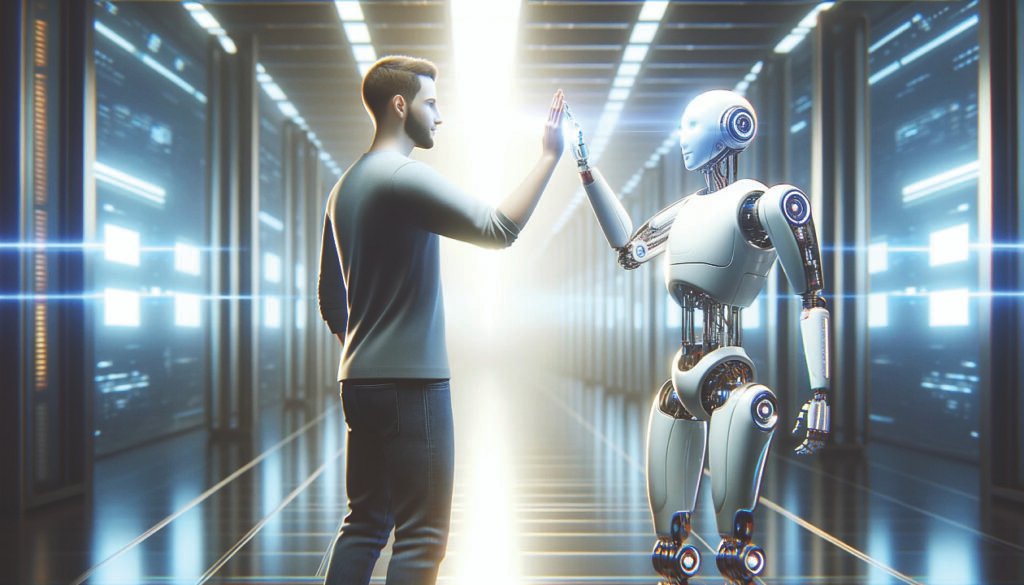AI & Robotics: Shaping the Future of Technology

Artificial Intelligence (AI) and robotics are two of the most transformative technologies of the 21st century, with profound implications for industries, society, and our everyday lives. As AI becomes more advanced, its integration with robotics is creating systems that can perform tasks once thought impossible for machines. From healthcare to manufacturing, AI-driven robots are revolutionizing how we approach problem-solving and automation.
The Role of AI in Robotics
AI refers to the development of computer systems capable of performing tasks that usually require human intelligence. When combined with robotics, AI enhances a robot’s ability to perceive, reason, learn, and adapt. Unlike traditional robots, which follow predefined rules, AI-driven robots can process complex data, learn from experience, and make decisions in real-time. This fusion has given rise to autonomous systems, which are capable of functioning with little to no human intervention.
Applications of AI & Robotics
1. Healthcare
AI and robotics are already transforming the healthcare sector. Robotic surgery, for example, allows for highly precise operations with minimal human involvement. Da Vinci surgical systems enable surgeons to perform minimally invasive surgeries, reducing patient recovery times. AI also powers medical robots capable of diagnosing conditions, assisting in surgeries, and even providing personalized treatment plans. Robotics is also applied in elderly care, with robots like Pepper and Paro offering emotional support and companionship.
2. Manufacturing & Automation
In manufacturing, robotics has long been used for tasks such as assembly, welding, and quality control. With AI integration, these robots can now analyze vast amounts of data to improve efficiency and predict potential issues before they occur. Autonomous systems like collaborative robots (cobots) work alongside humans, optimizing production lines and reducing errors. AI-driven automation is also essential in logistics and warehousing, where robots are used to sort, pack, and move goods efficiently.
3. Agriculture
AI-powered robots are revolutionizing agriculture by performing tasks such as planting, harvesting, and monitoring crops. Using computer vision and machine learning, these robots can detect pests, monitor plant health, and optimize water usage. Robots like Agrobot and Naio Technologies are helping farmers increase productivity while minimizing labor costs and environmental impact.
4. Autonomous Vehicles
Self-driving cars and drones are perhaps the most well-known examples of AI in robotics. Companies like Tesla, Waymo, and Amazon are leading the development of autonomous vehicles for both personal and commercial use. AI enables these vehicles to navigate complex environments, recognize obstacles, and make real-time decisions. Drones, powered by AI, are also being used for deliveries, aerial photography, and even medical supply transport in remote areas.
Ethical and Societal Implications
The rise of AI and robotics comes with significant ethical considerations. Concerns about job displacement, data privacy, and autonomous decision-making are critical topics that need to be addressed. There’s an ongoing debate about the balance between human control and AI autonomy, particularly in sensitive areas like warfare, where autonomous drones and robots could potentially make life-or-death decisions without human oversight.
Moreover, the use of AI-driven robots in surveillance and law enforcement raises concerns about bias, accountability, and the potential for misuse. Ensuring that AI systems are transparent, fair, and safe is essential as these technologies continue to evolve.
The Future of AI & Robotics
The future of AI and robotics promises to be even more exciting, with advances in quantum computing, neural networks, and bio-inspired robots on the horizon. We can expect AI-powered robots to play an increasingly prominent role in fields such as space exploration, disaster response, and personalized healthcare. The development of swarm robotics, where multiple robots collaborate seamlessly, is also poised to revolutionize everything from search-and-rescue missions to environmental monitoring.
In conclusion, AI and robotics are reshaping our world at a rapid pace. As these technologies evolve, their potential to drive innovation and improve quality of life is enormous. However, careful consideration must be given to the ethical, social, and economic implications to ensure that this progress benefits all of humanity.